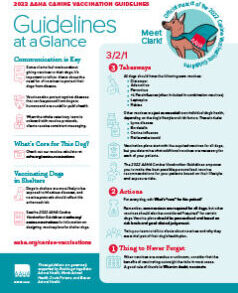

Jacob Svetz/Texas A&M University Division of Marketing and Communications
It’s a common belief that purebred dogs are more prone to disease than mixed-breed dogs, but a new study led by researchers at the Texas A&M School of Veterinary Medicine and Biomedical Sciences (VMBS) has busted this myth.
The study, published in the journal Frontiers In Veterinary Science, found that while certain dog breeds are prone to specific diseases, purebred and mixed-breed dogs are mostly equal when it comes to overall frequency of health condition diagnoses.
“There are several well-known diseases that frequently occur in specific dog breeds,” said Dr. Kate Creevy, chief veterinary officer of the Dog Aging Project and a professor in the VMBS’ Department of Small Animal Clinical Sciences. “This has helped perpetuate the misconception that all purebred dogs are more prone to disease, but that is not the case.”
The study — which surveyed the owners of more than 27,000 companion dogs — also found that some of the most common diagnoses, like ear infections or osteoarthritis, occur in both purebreds and mixed-breed dogs.
Breaking Down The Data
According to the study, 25 breeds make up about 60% of the purebred dog population within the Dog Aging Project. In order of popularity, those breeds are:
- Labrador retriever
- Golden retriever
- German shepherd
- Poodle
- Australian shepherd
- Dachshund
- Border collie
- Chihuahua
- Beagle
- Pembroke Welsh corgi
- Boxer
- Shi Tzu
- Miniature schnauzer
- Pug
- Havanese
- Cavalier King Charles spaniel
- Yorkshire terrier
- Great Dane
- Greyhound
- Boston terrier
- Siberian husky
- Shetland sheepdog
- English springer spaniel
- Australian cattle dog
- Doberman pinscher
Within these 25 breeds, a total of 53 unique medical conditions make up the top owner-reported medical conditions.
“The medical conditions reported by owners of purebred dogs varied considerably,” Creevy said. “However, some conditions appeared frequently in the top 10 reported health conditions by breed.”
Across the 25 most popular breeds, those 10 conditions were:
- Dental calculus (hardened plaque)
- Dog bites
- Extracted teeth
- Giardia (a parasite)
- Osteoarthritis
- Seasonal allergies
- Ear infection
- Heart murmur
- Fractured teeth
- Cataracts
For mixed-breed dogs, the most common reported conditions were highly similar, with cataracts and heart murmur being replaced by torn/broken toenail and chocolate toxicity.
Some conditions, like dental calculus and osteoarthritis, appeared with roughly the same frequency in both purebred and mixed-breed dogs. Other conditions were more common in one than the other; extracted teeth and dog bites were more common in purebreds, versus ear infections in mixed-breed dogs.
“Out of the 53 medical conditions that owners reported, 26 did not differ significantly between mixed-breed and purebred dogs,” Creevy said.
Implications For Dog Owners
Ultimately, one of the most important findings from the study is that dog breed is only one aspect of pet health to consider when creating a pet’s care plan or researching what kind of dog to adopt.
“People should consider many factors when choosing a dog, including environment, lifestyle, social interactions and physical activity that will be available to the dog,” Creevy said. “Planning for both preventive veterinary care and medical care as the dog ages is also prudent. Dog owners should also talk with their primary care veterinarians about the kinds of medical problems to which their new dog might be particularly prone based on breed, size, sex, etc.”
As the study also showed, some of the most common reasons owners take their dogs to the vet have little or nothing to do with breed.
“Dental disease, allergies and osteoarthritis are among the most common conditions for all dogs,” Creevy said. “Owners should work with their primary care veterinarians on a plan to manage dental health. Regular exercise and maintaining lean body weight may help delay, prevent or lessen the impact of osteoarthritis.”
Expanding Dog Health Understanding
Though the study is already one of the largest cross-sectional studies of canine health, researchers at the Dog Aging Project are far from done examining its findings.
“We were surprised by the number of owners who reported that their dogs had experienced a bite from another dog,” Creevy said. “More investigation is needed to determine what this means and what particular factors might put an individual dog at risk.”
The DAP is a collaborative, community scientist-driven data-gathering research project that enrolls companion dogs from all backgrounds to study the effects of aging and gain a better understanding of what contributes to a long and healthy life for a dog.
The DAP continues to accept dogs of all breeds into the project. To date, more than 50,000 dogs have been enrolled.
Many of their research projects have led to translational studies that inform not only dog health, but also human health. To enroll your dog, or learn more, visit dogagingproject.org.

Aubree Herrold/School of Veterinary Medicine and Biomedical Sciences
The post New Study Dispels Myth That Purebred Dogs Are More Prone To Health Problems appeared first on Texas A&M Today.
This post was originally published on this site be sure to check out more of their content.







































